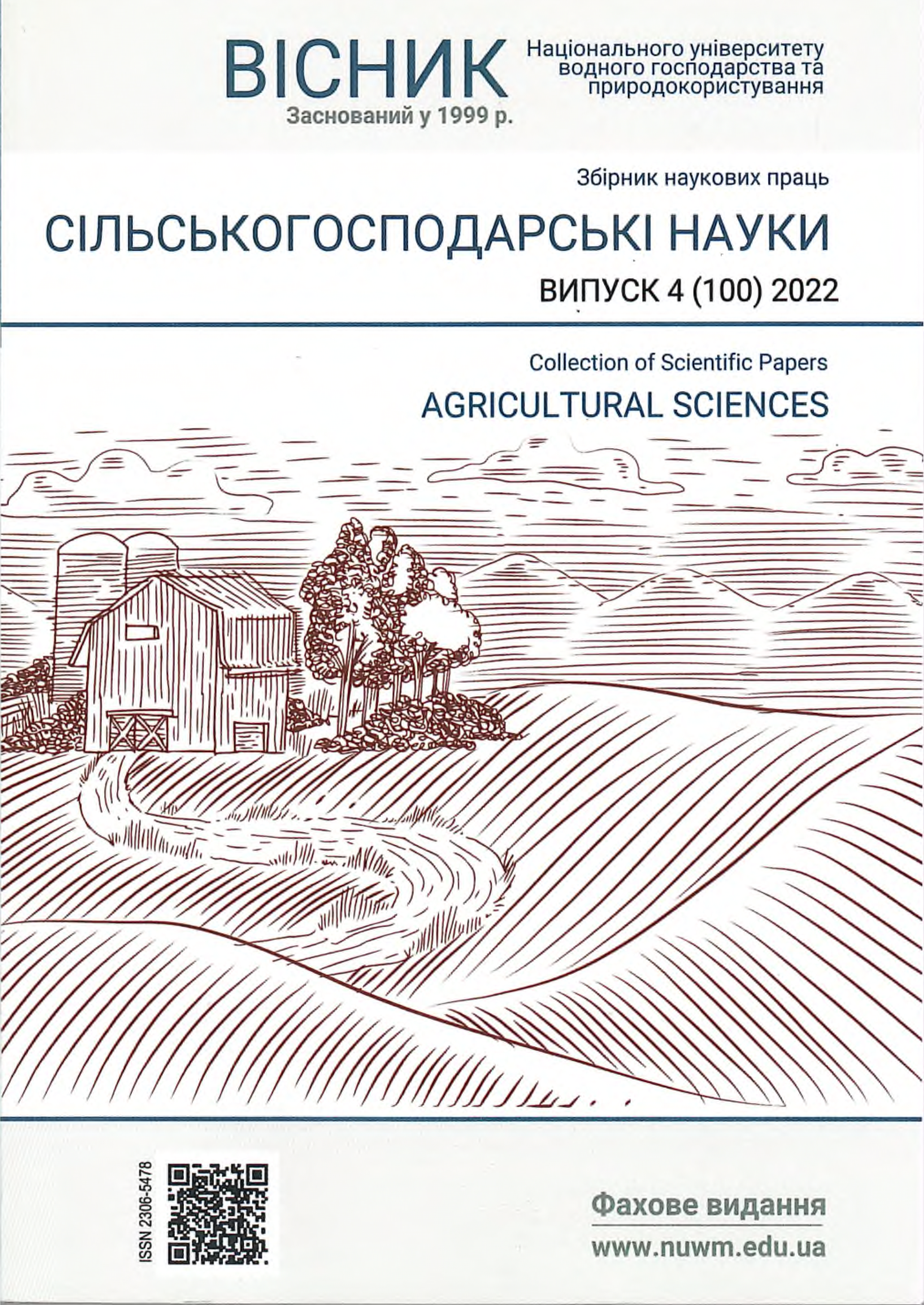TESTING OF ECOLOGICAL-SUBSTANTIVE CRITERIA ON SOIL DIFFERENCES IN THE VOLYN REGION
Keywords:
soils, soil difference, methods for identifying soil differences, substantive-parametric criteria, relative humus accumulation coefficient (RHAC).Abstract
The paper considers the use of indicators of PHAC (coefficient of profile accumulation of humus) and RHAC (coefficient of relative accumulation of humus) in research and production activities. Approbation of ecological-substantive criteria was carried out on the soil slopes of the Volyn region. This approach in practical soil research is at the stage of development, since parametric criteria have been proposed for zonal undisturbed soil types and subtypes. In practice, most agricultural lands have undergone one or another anthropogenic influence and change. These criteria do not apply to intrazonal, as well as organogenic soils (meadow-bog, bog, peat, anthropogenic, technogenic), since it is impossible to diagnose them on a parametric basis (PHAC, RHAC) due to significant variability in the spatial dimension. Therefore, they are diagnosed according to classical criteria.The predicted deviations of practical values from theoretical ones have been checked, this method requires production testing and adjustment. Identification of soil differences of 19 soil sections and 38 excavations in the northwestern forest-meadow zone by classical historical-genetic method and approbation of the application of substantive-parametric criteria by the method of determining the ecological-genetic status of Ukrainian soils were carried out.A positive correlation was established in 53% when determining the type and subtype in terms of the coefficient of relative accumulation of humus (RHAC) and in 73% when identifying the agricultural production groups of soils.The given results show that out of 15 analyzed agrogroups and their differences (with a sampling range from 1 to 9), in 11 cases, compliance with the actual theoretical values was established, which is significantly higher than when evaluating individual types and subtypes of soils. At the same time, the arithmetic mean depth of humus horizons for the corresponding ones was 25.4 cm, and for the inappropriate ones, 24.3 cm.Mostly in practice, not the names of soil differences are used, but their agrosoil grouping, therefore, an analysis of the results of studies on agroproduction groups of soils was carried out.Approbation of this method for the study area gave generally positive results, however, it needs to be improved in order to harmonize and ensure the principle of continuity between the classical methods for identifying soil inclinations and the method for determining the ecological and genetic status of soils based on substantive-parametric criteria.References
Ґрунти Волинської області / за ред. Шевчука М. Й., Зінчука М. І., Зіньчука П. Й. 2-ге вид., перероб. і доп. Луцьк : Вежа-Друк, 2016. С. 48–49.
Зінчук М. І., Шевчук М. Й., Зіньчук П. Й. Сучасні класифікації ґрунтів та проблема їхньої регіональної гармонізації в Україні. Вісник Львівського університету. Сер. Географічна. 2014. С. 124–134.
Визначник еколого-генетичного статусу та родючості ґрунтів України : навч. посіб. / М. І. Полупан, В. Б. Соловей, В. І. Кисіль, В. А. Величко. К. : Колообіг, 2005. 304 с.
Полупан М. І., Соловей В. Б., Величко В. А. Класифікація ґрунтів України. Київ : Аграрна наука, 2005. 300 с.
Полупан М. І., Величко В. А. Українське агрономічне ґрунтознавство : підручник : у 2-х частинах / за ред. М. І. Полупана. Класифікація ґрунтів. Ґрунтово-екологічне районування. Зональність як фактор географії ґрунтів за еколого-генетичним статусом … . Київ : Аграрна наука, 2019. Ч. 2. С. 65–373.
REFERENCES:
Grunty Volynskoi oblasti / za red. Shevchuka M. I., Zinchuka M. I., Zinchuka P. I. 2-he vyd., pererob. i dop. Lutsk : Vezha-Druk, 2016. S. 48–49.
Zinchuk M. I., Shevchuk M. I., Zinchuk P. I. Suchasni klasyfikatsii gruntiv ta problema yikhnoi rehionalnoi harmonizatsii v Ukraini. Visnyk Lvivskoho universytetu. Seriia heohrafichna. 2014. S. 124–134.
Polupan M. I. Vyznachnyk ekoloho-henetychnoho statusu ta rodiuchosti gruntiv Ukrainy : navch. posib. /
M. I. Polupan, V. B. Solovei, V. I. Kysil, V. A. Velychko. K. : Koloobih, 2005. 304 s.
Polupan M. I., Solovei V. B., Velychko V. A. Klasyfikatsiia gruntiv Ukrainy. Kyiv : Ahrarna nauka. 2005. 300 s.
Polupan M. I., Velychko V. A. Ukrainske ahronomichne gruntoznavstvo : pidruchnyk : u 2-kh chastynakh / za red. M. I. Polupana. Klasyfikatsiia gruntiv. Hruntovo-ekolohichne raionuvannia. Zonalnist yak faktor heohrafii gruntiv za ekoloho-henetychnym statusom … . Kyiv : Ahrarna nauka, 2019. Ch. 2. S. 65–373.

